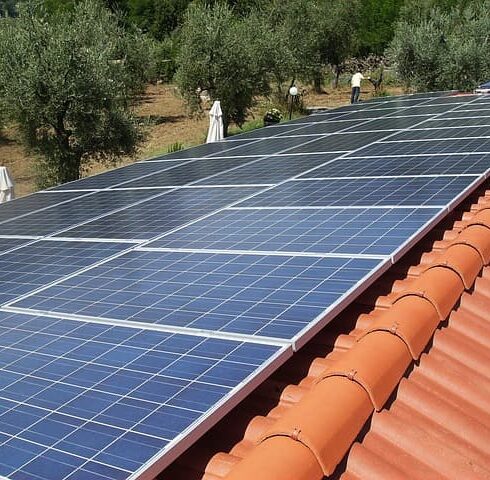The Countries that Currently Produce the Most Wind Energy
La wind power is one of the major sources of change right now to other horizons that have nothing to do with the use of fossil fuels. You just have to know that at least 84 countries around the world are using wind power to power their power grids.
Just one year ago, wind power exceeded 369,553 gigawatts and total energy production is growing rapidly and accounts for 4 percent of the total electricity used on the planet. And while the 17 GW installed in 2014 was already a big achievement, it reached 21.7 GW in the first half of 2015, giving us a global capacity of 392 GW, and about 428 GW by the end of this year.
Global capacity grew in the first months of 2015. by 5.8 percent after reaching 5.3 percent in 2015 and 4.9 percent in 2013 over the same period. When you consider that in 2014 the annual growth rate was 16.5 percent, so by mid-2015 it will reach 16.8 percent, we can know about the excellent year we are sticking to in 2015.
This increase in wind energy is due mainly to the economic benefits From this source – increased competitiveness, uncertainty in global oil and gas supplies and the need to transition to clean and sustainable technologies over time.
The wind industry is now driven by a large number of industries large capacity, energy cooperatives for environmental groups. It is known that even more diversity will be needed to make this type of power source more successful.
As of the end of June 2015, the largest installed wind power capacity is China in first place, followed by the United States in second and Germany in third.
China has 124 GW this year, and has grown by 10 GW since 2014 and 44 GW since 2013. Continuous growth that partly helps solve pollution problems, although more money will need to be invested in this type of source to be able to actually reduce them.
The United States is next with an installed capacity of 67 GW A since 2013, in just two years, its capacity has increased by 8 GW with real stagnation, which of course can be seen in Germany, India and Spain, compared to the tremendous growth in China.
In addition to the major forces in wind power, one must cite Brazil, which showed the highest growth rate of all markets with 14% -growth in 2015.
As a negative, we find several European markets. that have been paralyzed, what will happen to Germany when certain rule changes come into effect in the next two years, which will reduce its wind power capacity.
China is expected to have 2025 GW by 347.2 with annual installations reaching 56.8 GW. Something very important about what this type of energy will mean for this country.
And although China is now at the peak of this type of energy, it is really in a period of stagnation. The numbers are available By 2025, the world will exceed 962.6 GW and that means that China, even with this setback, will be one of the major players on the planet in this type of energy.
It was predicted this year that China will not only be ranked as the largest installer of wind energy by 2015, but will also continue to lead the sector in 2016.
Other countries that will be vital
India, Australia, Japan, South Korea, the Philippines, Thailand and Taiwan. will increase their capacity from 148.2 GW in 2014 to 437.8 GW with a global share of 45.5%.
Other major countries For wind power success Argentina, Brazil, Chile, Colombia and Mexico will add 45.6 GW. We have already talked about Uruguay and Costa Rica as two of the greatest examples of policies that allow this type of clean energy to develop, which is vital for our future.
Key wind energy for the energy of the future
This type of energy has become extremely cost-effective. In regions where energy consumption is growing, new sources must be created, and this is where wind energy has a very important role to play.
In mature markets, where the infrastructure for coal, nuclear or gas generation already exists, there are even more challenges ahead because of the big changes that have to take place. This is where wind power has to compete with maintenance costs from existing energy sources. Nevertheless, a wind power source is a very attractive option, in addition to providing energy without greenhouse gas emissions.
Installing a wind turbine
There’s something useful about it, too, and they cut costs. There are three main reasons. First, wind turbines they are aging, with taller towers and lighter construction. Second, supply chain efficiency has improved, and manufacturing systems are cutting costs. Third, and last, is that as wind turbines grow, costs are reduced by producing on a larger scale than they used to be.
Another of his main reasons is the fight against climate change and the impact of clean and cheap energy, which will be sustainable over time. Providing the necessary energy so that the world we live in functions and at the same time does not lead to CO2 emissions into the atmosphere is the goal of major companies like Vestas.
These are very important investments in new technologies so that the energy efficiency of these turbines and various innovations lead to other avenues where they can take a higher percentage of global wind energy consumption.
We’ve seen celebrities at the level of Bill Gates they are investing large sums of money in new energy technologies such as the $2.000 billion spent.
This is from technology giants who intuitively know that we have to change the way we see the energy panorama we are in. If we commented Gates, another great like Mark Zuckerberg, is also contributing sand to encourage more and more private corporations to seek a cleaner future for all and a sustainable planet.
We also have new technologies such as turbines without blades created from Vortex, a Spanish company that is now strongly credited with introducing some wind turbines, which are unlikely to have an impact on the environment because, besides eliminating noise more traditional, they do not change the environment as they do.
This Vortex technology works in such a way that it uses the deformation produced by the vibration caused by the wind as it enters resonance in a semi-rigid vertical cylinder anchored in the ground. It is this deformation that is responsible for generating electricity.





